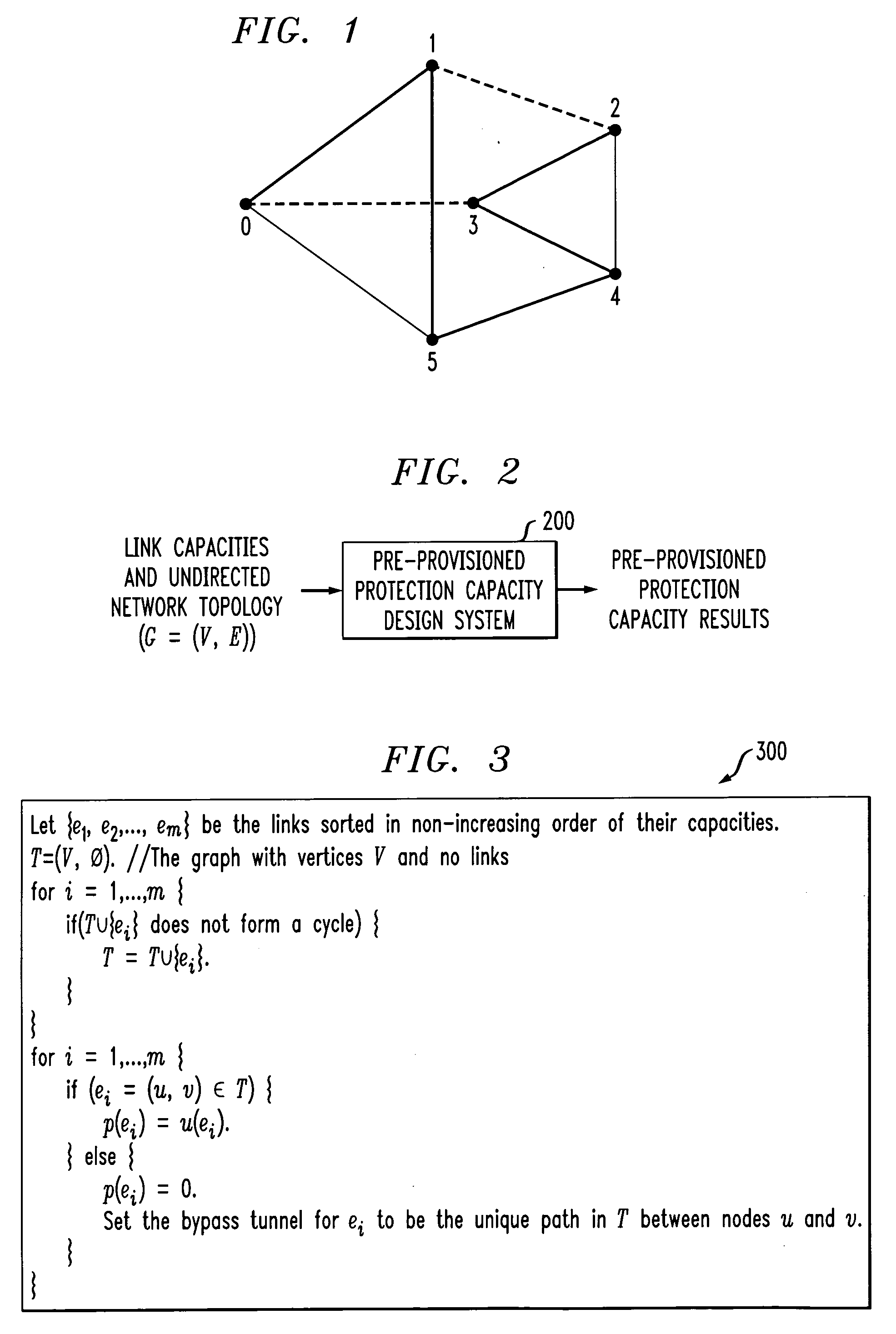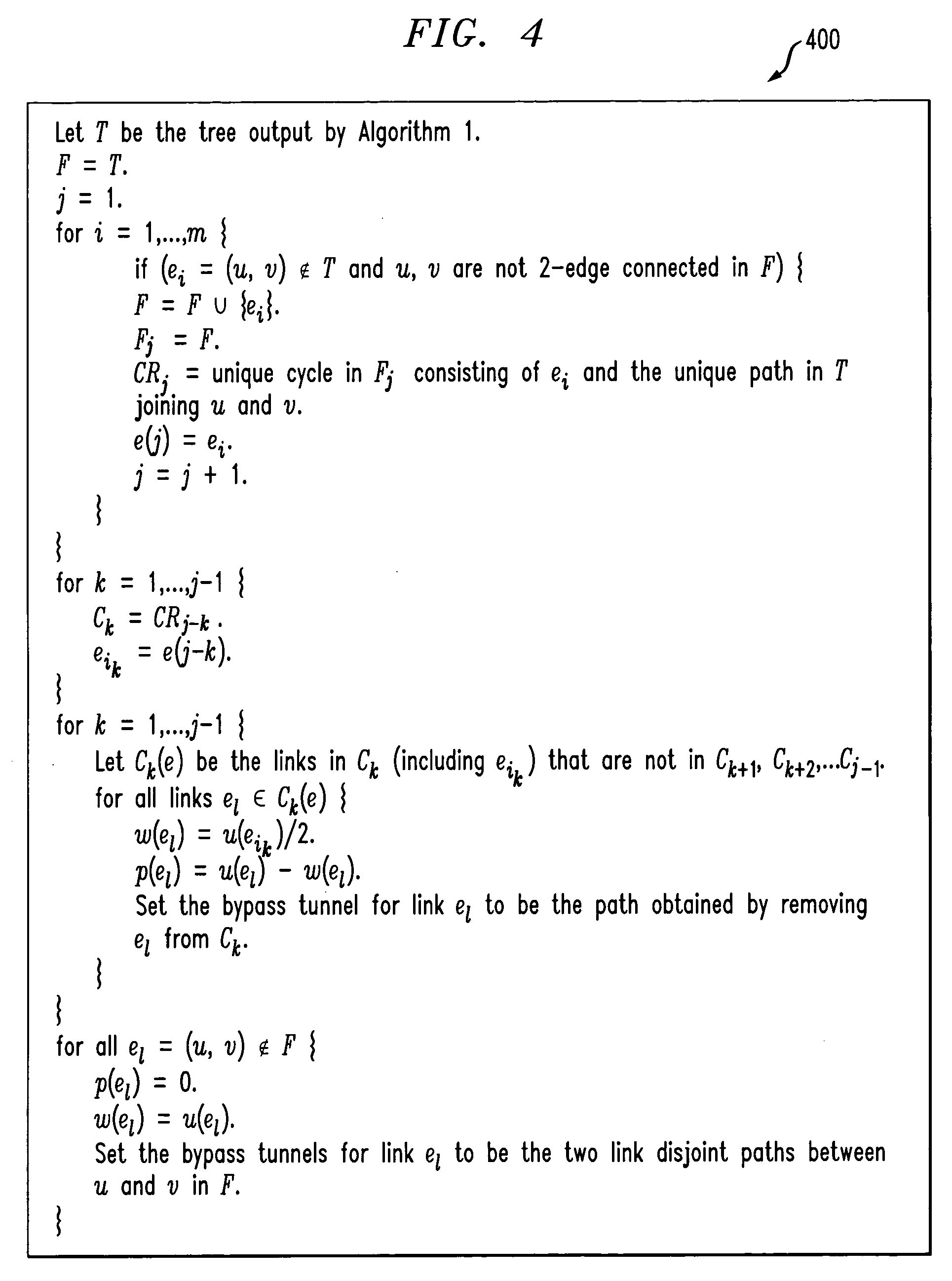Method and apparatus for pre-provisioning networks to support fast restoration with minimum overbuild
a network and network design technology, applied in data switching networks, frequency-division multiplexes, instruments, etc., can solve the problems of requiring 100% redundancy, half the total capacity, and complex network modern backbone and transport networks, and achieve the effect of improving network design techniques and fast restoration
- Summary
- Abstract
- Description
- Claims
- Application Information
AI Technical Summary
Benefits of technology
Problems solved by technology
Method used
Image
Examples
Embodiment Construction
[0032] The following description will illustrate the invention in the context of an exemplary MPLS network. It should be understood, however, that the invention is not necessarily limited to use with any particular type of network. The invention is instead more generally applicable to any environment in which it is desirable to perform pre-provisioning to support fast restoration with minimum overbuild. Thus, by way of example only, the techniques of the invention may also be applied to optical networks and asynchronous transfer mode (ATM) networks.
[0033] As generally used herein, the phrase “bypass (or backup) tunnel” refers to a path in the network along whose links protection capacity is reserved to carry all or a portion of the rerouted working traffic, subsequent to a failure, of a given link of the network. The phrase is not intended to be limited to any particular type of network.
[0034] The present invention addresses, inter alia, the problem of determining the least 30 amo...
PUM
 Login to View More
Login to View More Abstract
Description
Claims
Application Information
 Login to View More
Login to View More - R&D
- Intellectual Property
- Life Sciences
- Materials
- Tech Scout
- Unparalleled Data Quality
- Higher Quality Content
- 60% Fewer Hallucinations
Browse by: Latest US Patents, China's latest patents, Technical Efficacy Thesaurus, Application Domain, Technology Topic, Popular Technical Reports.
© 2025 PatSnap. All rights reserved.Legal|Privacy policy|Modern Slavery Act Transparency Statement|Sitemap|About US| Contact US: help@patsnap.com



